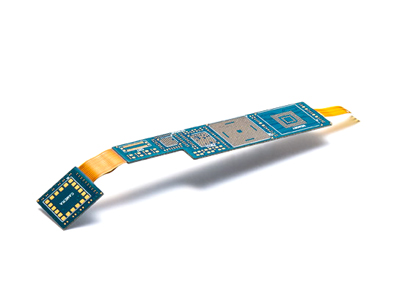Flex PCB (Flexible Printed Circuit Board) and non-flex PCB (Rigid Printed Circuit Board) are two different types of circuit boards with distinct characteristics. Here are the key differences between them:

1.Flexibility: The most apparent difference is the flexibility of the PCB. Flex PCBs are designed to be highly flexible, allowing them to bend, twist, and fold to fit into unconventional shapes or tight spaces. On the other hand, non-flex PCBs are rigid and cannot be flexed or bent.
2.Substrate Material: Flex PCBs are typically made of flexible polymer materials like polyimide (PI) or polyester (PET). These materials provide excellent flexibility while maintaining electrical conductivity. Non-flex PCBs, on the other hand, are made of rigid substrate materials such as fiberglass-reinforced epoxy (FR-4) or phenolic resin.
3.Applications: Flex PCBs are commonly used in applications where space is limited, and the circuit board needs to conform to a specific shape or be flexible enough to accommodate movement. They are often found in devices like wearable electronics, medical devices, aerospace systems, and automotive applications. Non-flex PCBs are used in applications where rigidity and structural stability are essential, such as computers, consumer electronics, industrial equipment, and telecommunications devices.
4.Design Complexity: Flex PCBs offer greater design flexibility, allowing for more intricate and complex circuitry layouts. They can have multiple layers and utilize three-dimensional designs to maximize space utilization. Non-flex PCBs typically have a simpler design with fewer layers and a more straightforward two-dimensional layout.
5.Manufacturing Process: The manufacturing processes for flex and non-flex PCBs differ. Flex PCBs require specialized techniques, such as laser cutting or chemical etching, to create the flexible circuits and to ensure reliable electrical connections. Non-flex PCBs are manufactured using conventional PCB fabrication methods, including etching, drilling, and layer stacking.
It's important to note that the choice between flex and non-flex PCBs depends on the specific requirements of the application. Flex PCBs provide advantages in terms of space-saving, durability, and design flexibility, but they are typically more expensive to manufacture compared to non-flex PCBs. Non-flex PCBs offer rigidity and structural stability, making them suitable for applications that do not require flexibility.
Get more knowledge about the difference between flex and non flex PCB please refer to Rigaopcb:https://www.rigaopcb.com/